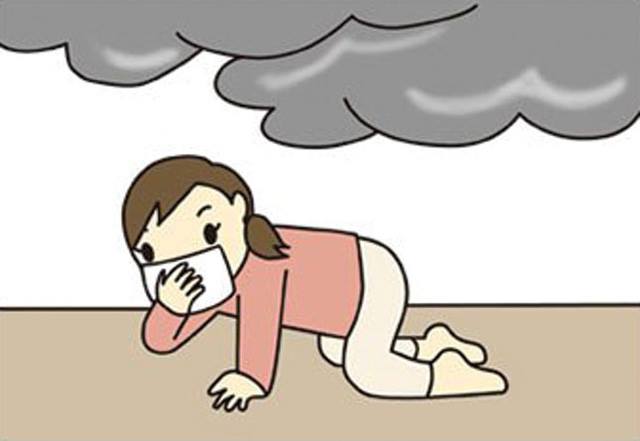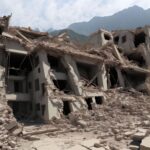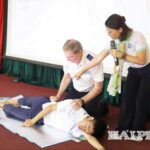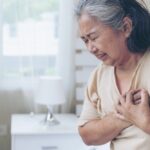Mục lục:
Ms. Phan Ngoc Bich, a chemistry teacher at Nguyen Hue High School in Vung Tau City, analyzes that in a fire, many toxic substances are generated, which, when inhaled within a few minutes, can cause the death of a person.

In a fire, various materials will produce many toxic gases, but in my opinion, the most dangerous is carbon monoxide (CO), not carbon dioxide (CO2). Why is that?
Heartbreaking news about the recent fire in Saigon has made me concerned, prompting me to write these thoughts. As a chemistry teacher and a member supporting the Survival Skills Vietnam ( Survival Skills Vietnam-SSVN) ) project, I have been exposed to some first aid and fire evacuation skills through books, newspapers, the fire department, and especially from first aid expert Paramedic Tony Coffey. Here, I would like to summarize some essential information about fire evacuation and first aid (feel free to add your contributions in the comments):

1. Characteristics of a fire:
– Smoke will cover the area within a few minutes.
– The majority of injuries are caused by smoke, not by heat.
– Hot air rises, so clean air to breathe tends to concentrate near the floor.
2.Special attention to the toxic gas carbon monoxide (CO):
In a fire, various materials will produce many toxic gases, but in my opinion, the most dangerous is carbon monoxide (CO), not carbon dioxide (CO2). Why is that?
– Under normal conditions, burning materials containing carbon will produce CO2. However, in a fire, there is often insufficient oxygen, leading to the production of CO.
CO is lighter than air and heat, allowing it to spread rapidly.
– CO prevents the blood from carrying oxygen, which can cause death within a few minutes.
– The extremely dangerous aspect is that CO is colorless, odorless, and tasteless, making it imperceptible to humans. Many deaths occur during sleep due to inhaling CO from burning coal in houses.
3. What to do if caught in a fire:
– Stay calm.
– Use a gas mask to protect yourself. If unavailable, use wet towels, clothes, or blankets to filter out some of the toxic gases.
– If safe, turn off the gas supply or extinguish the flames.
– Find the quickest way to escape the building. Do not use elevators.
– Crawl low to the ground if the air is difficult to breathe or there is heavy smoke. Lower areas will have more oxygen to breathe.
– Before opening a door, use the back of your hand to check its temperature. If it is too hot, do not open it and find an alternative route. Additionally, you can use a wet blanket to block door gaps and prevent toxic gases and heat from entering. If you must escape, cover yourself with a wet blanket to protect against burns and asphyxiation. If clothing catches fire, quickly drop to the ground and roll back and forth to extinguish the flames before crawling outside.
– If there is a window with no toxic gases, open it to balance the pressure and provide additional oxygen.
– Use bright objects, flashlights, or cell phone lights to signal the fire rescue team.
– Call emergency services at 114.
4. What to do for everyone:
– Equip your home with basic fire-fighting tools (fire extinguishers) and learn how to use them.
– Equip yourself and your family with basic first aid knowledge: opening airways, performing CPR, rescue breathing, etc.> Devote time to attend first aid and fire evacuation training courses to receive proper guidance and practical exercises. You can participate in training at SSVN.
– Download first aid instructional app (free) and review it occasionally to remember the skills or use it in emergencies. This app provides detailed instructions (with illustrations) for common first aid procedures such as unconsciousness, burns, bleeding, stroke, choking, drowning, electric shock.
– Coordinate with your family to establish a designated meeting point after escaping the danger if an incident occurs.






